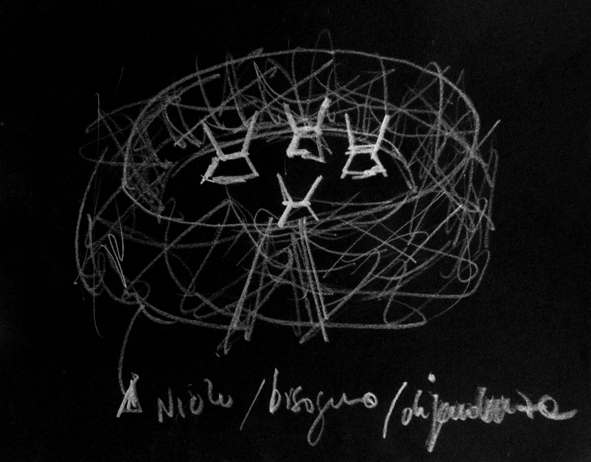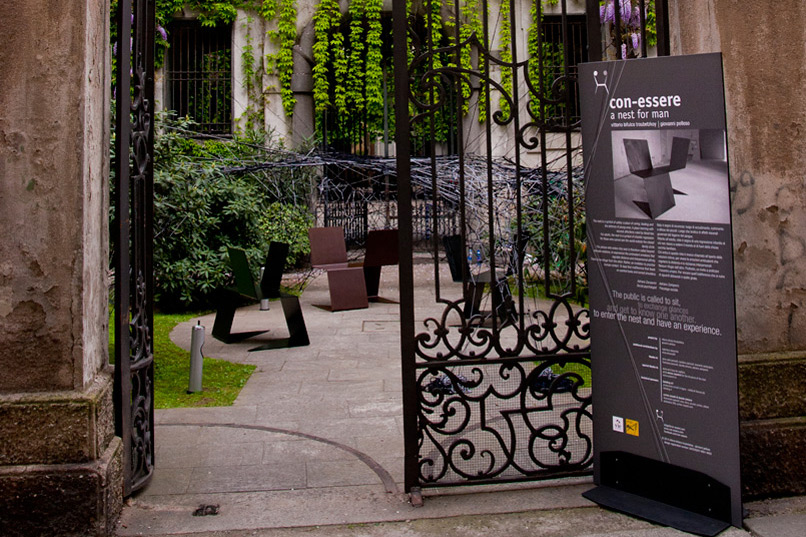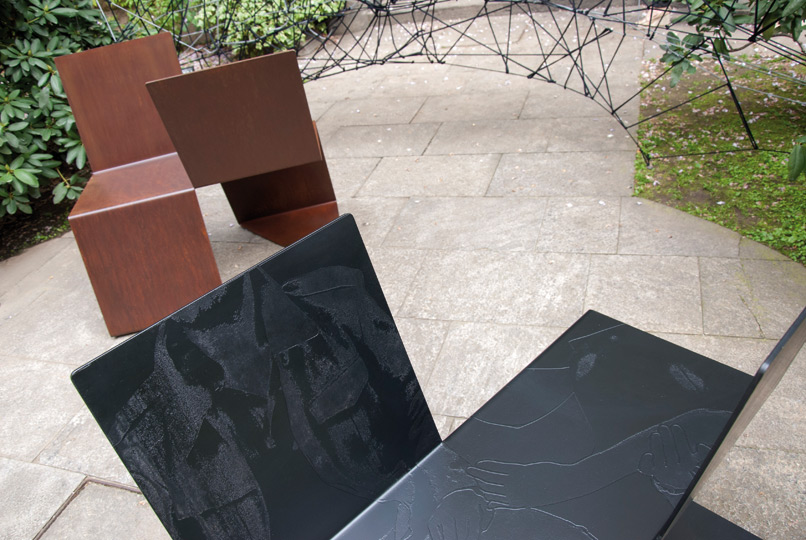in the garden of an old house, the installation offers a nest for man. it is a place of intimacy and meditation, where one can be free from fear and discomfort, criticism and censorship.
the public is called to sit, to enter the nest and have an experience. to exchange glances and get to know one another.

a nest for mankind
three double seats in steel are arranged in a nest, giving form and organisation to a garden for meeting, a shared, comfortable, welcoming setting.
the installation is a nest for mankind. it is a place of intimacy and meditation, where one can be free from fear and discomfort. it is a place of meeting and alliance, of service to man and of necessity.
it is a work that mixes design, interaction with public space and the act of participation. it is a step towards recognising oneself as part of the universal human family, that of man with man (beyond blood ties).
the nest, then, is really the nest of mankind. It contains needy beings, who, sitting down, begin an exchange and participate, meeting the gaze of the other and feeling the presence of the other, as a living body.

the nest is a symbol of safety: a place of caring, feeding and the defence of young ones. a place teeming with visceral affections ruled by blood ties.
for adults, the nest is a symbol of infantile regression for those who cannot see the world outside the closed family circle.
the person who enters this nest is therefore called beyond intimate relations, to experience the ambivalent emotions that regulate distance and interpersonal affinity.
there is no refuge from the other. rather, an invitation to practise human contact. to beat that indifference that feeds on averted looks and turned shoulders.
adriano zamperini
social psychologist

